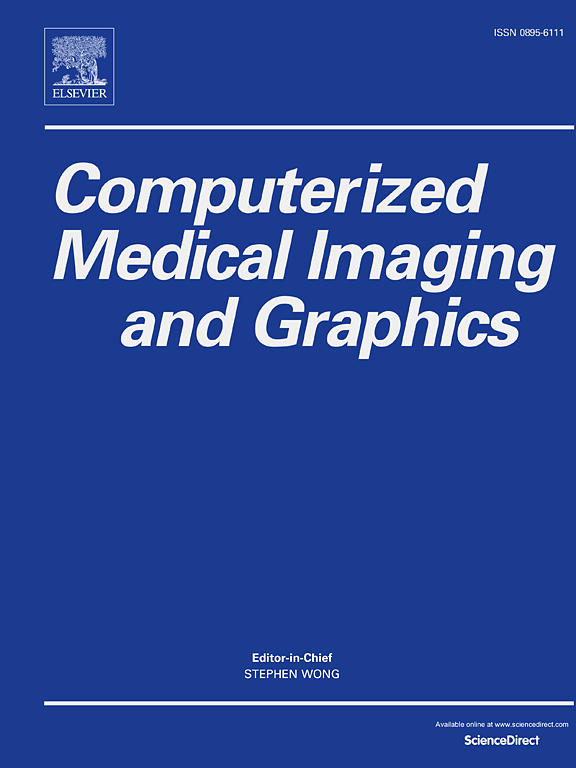Adaptive batch-fusion self-supervised learning for ultrasound image pretraining
IF 4.9
2区 医学
Q1 ENGINEERING, BIOMEDICAL
Computerized Medical Imaging and Graphics
Pub Date : 2025-07-08
DOI:10.1016/j.compmedimag.2025.102599
引用次数: 0
Abstract
Medical self-supervised learning eliminates the reliance on labels, making feature extraction simple and efficient. The intricate design of pretext tasks in single-modal self-supervised analysis presents challenges, however, compounded by an excessive dependency on data augmentation, leading to a bottleneck in medical self-supervised learning research. Consequently, this paper reanalyzes the feature learnability introduced by data augmentation strategies in medical image self-supervised learning. We introduce an adaptive self-supervised learning data augmentation method from the perspective of batch fusion. Moreover, we propose a conv embedding block for learning the incremental representation between these batches. We tested 5 fused data tasks proposed by previous researchers and it achieved a linear classification protocol accuracy of 94.25% with only 150 self-supervised feature training in Vision Transformer(ViT), which is the best among the same methods. With a detailed ablation study on previous augmentation strategies, the results indicate that the proposed medical data augmentation strategy in this paper effectively represents ultrasound data features in the self-supervised learning process. The code and weights could be found at here.
超声图像预训练的自适应批融合自监督学习
医学自监督学习消除了对标签的依赖,使特征提取简单高效。然而,单模态自监督分析中复杂的借口任务设计带来了挑战,加上过度依赖数据增强,导致医学自监督学习研究的瓶颈。因此,本文重新分析了医学图像自监督学习中数据增强策略引入的特征可学习性问题。从批量融合的角度提出了一种自适应自监督学习数据增强方法。此外,我们提出了一个卷积嵌入块来学习这些批次之间的增量表示。我们对前人提出的5个融合数据任务进行了测试,在Vision Transformer(ViT)中,仅用150个自监督特征训练就获得了94.25%的线性分类协议准确率,是同类方法中最好的。通过对以往增强策略的详细消融研究,结果表明本文提出的医疗数据增强策略有效地表征了自监督学习过程中的超声数据特征。代码和权重可以在这里找到。
本文章由计算机程序翻译,如有差异,请以英文原文为准。
求助全文
约1分钟内获得全文
求助全文
来源期刊
CiteScore
10.70
自引率
3.50%
发文量
71
审稿时长
26 days
期刊介绍:
The purpose of the journal Computerized Medical Imaging and Graphics is to act as a source for the exchange of research results concerning algorithmic advances, development, and application of digital imaging in disease detection, diagnosis, intervention, prevention, precision medicine, and population health. Included in the journal will be articles on novel computerized imaging or visualization techniques, including artificial intelligence and machine learning, augmented reality for surgical planning and guidance, big biomedical data visualization, computer-aided diagnosis, computerized-robotic surgery, image-guided therapy, imaging scanning and reconstruction, mobile and tele-imaging, radiomics, and imaging integration and modeling with other information relevant to digital health. The types of biomedical imaging include: magnetic resonance, computed tomography, ultrasound, nuclear medicine, X-ray, microwave, optical and multi-photon microscopy, video and sensory imaging, and the convergence of biomedical images with other non-imaging datasets.

 求助内容:
求助内容: 应助结果提醒方式:
应助结果提醒方式:


